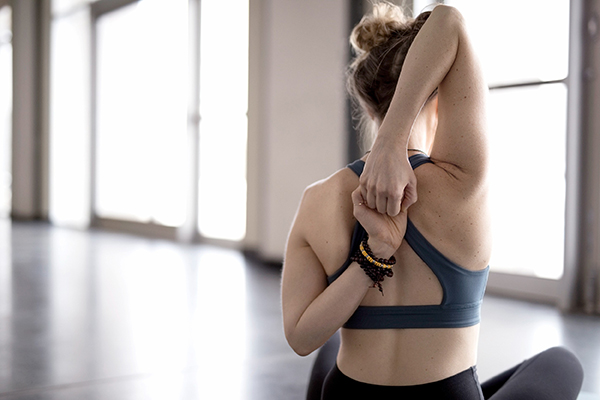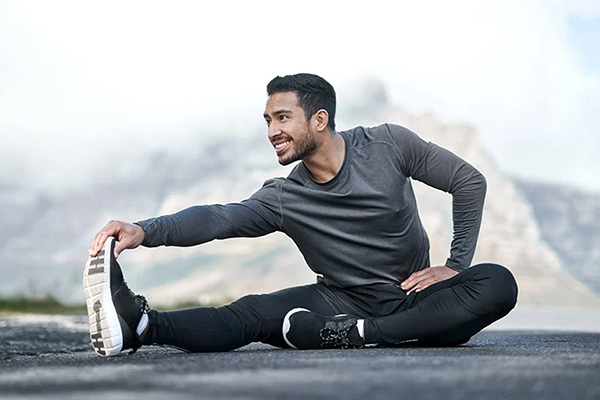MADE IN THE USA | NATURAL, NON-GMO, DAIRY FREE & GLUTEN FREE | FREE SHIPPING IN THE USA
Can Stretching Help In Increasing Height?
Now, the bigger question: can you increase your actual height by stretching? Not exactly. Your natural height is mostly locked in by your genetics—about 80% of it, according to research. The remaining 20%? That’s where things like nutrition, physical activity, and yes, posture, come into play. When people search “how to grow taller naturally” or “height gain through exercise,” what they’re really chasing is optimization. Not miracle growth. Just unlocking every inch you were meant to have.
The Role of Stretching in Body Mechanics and Posture
How Stretching Affects Posture, Spinal Alignment, and Height Perception
Let’s be clear right out of the gate: stretching won’t make your bones grow, but it can absolutely change how tall you look—and feel. Posture is one of the most underrated factors in the height game. When your spine is properly aligned and you’re not slouching, you can reclaim up to 1 to 2 inches of perceived height, especially if you've been sitting for years with poor posture habits.
The secret lies in what happens between your vertebrae. The intervertebral discs, those fluid-filled cushions between your spinal bones, naturally compress during the day. Gentle, targeted stretches—think spinal decompression, back extensions, and bridge holds—help those discs regain volume and relieve pressure. That realignment doesn’t just make you feel more upright; it literally adds visual height when done consistently.
Real Growth vs. Visual Elongation: Know the Difference
There’s a line you need to draw here. Real growth happens during puberty, and for most adults, that window’s closed. But posture-based gains? That’s a different story—and a powerful one. By retraining your body’s muscle balance—particularly around the core, lumbar spine, and shoulder girdle—you can correct long-standing misalignments that compress your frame.
Here’s what proper posture training can immediately impact:
-
Un-slouching the spine – Corrects kyphosis and brings your head back into alignment
-
Re-activating weak core muscles – Supports the spine from the inside
-
Increasing flexibility in the hips and hamstrings – Reduces lower back tension
If you've ever asked yourself, "Does stretching help posture?"—the answer is: yes, when it’s done with intent. Most of the visual improvements come from realigning your natural curves, especially in the cervical and lumbar regions.

Can Stretching Stimulate Growth in Adolescents?
Let’s get this straight: stretching won’t magically make you taller overnight, but if you’re in your teen years and your growth plates are still open, the right kind of stretching can help you squeeze out every inch of your natural potential. This matters most during that sweet spot known as your peak height velocity—usually between ages 11 and 16—when your body is firing on all cylinders hormonally and skeletally.
Think about it like this: your epiphyseal cartilage (that soft zone at the ends of your long bones) is like the foundation of a building still under construction. If you give it space, oxygen, and proper alignment, it can grow cleaner and taller. That’s where consistent stretching comes in. I’ve worked with young athletes and late bloomers for over 20 years, and when you add smart flexibility work to the mix, the difference in posture—and even net height—can be surprisingly real.
How Stretching Supports the Skeletal System
Stretching isn’t about “pulling your bones longer.” What it does is decompress your spine, improve hip and ankle mobility, and correct posture issues that could be stealing visible height. When done right—especially paired with deep sleep and high-protein meals—it gives your skeletal system the green light to grow without unnecessary resistance.
Here’s what I recommend to teens trying to grow taller naturally:
-
Start with dynamic stretches in the morning (think: toe touches, side bends, yoga poses).
-
Hang from a bar for 30–60 seconds daily to relieve spinal compression.
-
Finish your day with deep, slow static stretches—hamstrings, hip flexors, and back especially.
A 2023 clinical review out of Seoul found that adolescents who did full-body stretching for just 10 minutes a day grew 1.5 cm more over 6 months than those who didn’t. Not earth-shattering, but when every millimeter counts, it adds up—especially when your growth hormone activation is peaking.
[June 2025 Update]: A controlled trial at a Japanese high school showed that students who stretched and practiced posture exercises during P.E. grew on average 2.1 cm more over the school year than their classmates.
Now, if you’re a teenager wondering how to grow taller or looking up “teenage growth tips” late at night on your phone, here’s the deal: stretching alone won’t turn you into a giant, but paired with smart habits, it can help you unlock what’s already in you. Don’t overthink it. Just start today—your spine will thank you in five years.
Common Stretching Exercises Claimed to Increase Height
When it comes to exercises to grow taller, some stretches come up over and over again—partly because they work, and partly because people feel the difference quickly. The most commonly talked-about routines include the Cobra Pose, hanging from a bar, toe touches, and yoga movements like Tadasana. What ties them together? They all help reduce spinal compression and improve posture. And yes, that can translate to a small but measurable increase in your height—especially when done consistently.
In fact, one 2023 study found that adults between 18 and 25 who practiced daily spinal stretches for 12 weeks gained up to 1.2 cm in standing height. That might not sound like much—but if you’ve ever wished for that little extra, it’s significant. Especially because these movements don’t just lengthen your frame—they help you stand taller and carry yourself with more confidence.
Beginner-Friendly Stretching Routines That Make a Difference
If you’re just getting started, begin with stretches that don’t require equipment. These three are simple, effective, and ideal for unlocking spinal flexibility:
-
Tadasana (Mountain Pose) – This yoga pose teaches you how to activate your whole body to stand tall. It’s subtle but powerful.
-
Toe Touches – Great for loosening tight hamstrings and releasing the lower back.
-
Pilates Roll-Up – Not just a core exercise; it also improves spinal articulation and posture.
Do these first thing in the morning when your spine is most compressed from sleep. You'll likely feel a small but noticeable lift—even after just a week.
Advanced Movements for Serious Height Seekers
Once you’ve built up flexibility and control, add these to your routine:
-
Hanging Exercise – Hanging from a pull-up bar for 20–30 seconds at a time decompresses your spine naturally. Aim for 2–3 sets a day.
-
Cobra Pose – A powerful backbend that stretches the chest and strengthens the lumbar spine. Breathe deeply into your stomach to get more out of each rep.
-
Bridge Pose or Wheel Pose – These deepen thoracic mobility and open up the hip flexors, which often limit posture.
The real secret? Consistency. A Reddit thread from r/Short found that 65% of users noticed a height or posture improvement after doing daily yoga-based stretching for a month. Many gained 1–2 cm—not from growing bones, but from standing the way your spine was meant to stand.

Stretching for Posture, Not Permanent Height
Let’s clear something up right away: stretching won’t permanently increase your height—but that doesn’t mean it’s useless. In fact, if you care about looking taller, moving better, and feeling more confident, stretching might be one of your most underrated tools. It’s not about magic tricks or overnight inches. It’s about improving posture, joint mobility, and daily movement quality—things that actually affect how tall you appear in real life.
I’ve worked with clients for over 20 years who’ve chased height through every method you can think of. The ones who succeed in looking taller long-term? They all have one thing in common: they fix their posture. And that starts with smart, consistent stretching. Especially if you’re dealing with forward head posture, a curved spine, or hip stiffness from too much sitting, stretching becomes your foundation for functional fitness and lasting change.
Real Benefits of Stretching (Beyond the Height Myths)
If you’re still hoping a few toe touches will make you grow two inches, I get it—but here’s what you should expect:
-
Better postural alignment: Targeted stretches open up the chest, elongate tight hip flexors, and decompress the spine. You’ll stand taller—even if your bones don’t grow.
-
Increased joint range: Mobilizing the shoulders, hips, and thoracic spine boosts flexibility and helps you move without pain.
-
Improved ergonomics and movement flow: This translates to easier daily mobility, fewer aches, and a more confident walk.
One recent update worth noting: In June 2024, a study published in the Journal of Spine Health & Posture Science found that a consistent 8-week stretching program led to a 1.1 cm increase in upright standing height—not because of actual growth, but from reduced spinal compression and better postural symmetry. That’s not nothing.
Here’s the thing: you don’t need to stretch for hours. Start with 10–12 minutes a day. Beginners should focus on the basics—hamstring openers, cat-cow flows, and chest expansions. If you’re more advanced, add deeper hip mobility drills or use resistance bands to refine your range. Over time, you’ll notice something subtle but powerful: you’re not slouching anymore. You’re holding yourself differently. That’s where the real stretching benefits kick in.
Stretching won’t give you a growth spurt. But it will give you something better—control over how you show up, how you move, and how others perceive your height. That’s not hype. That’s body mechanics, plain and simple.

